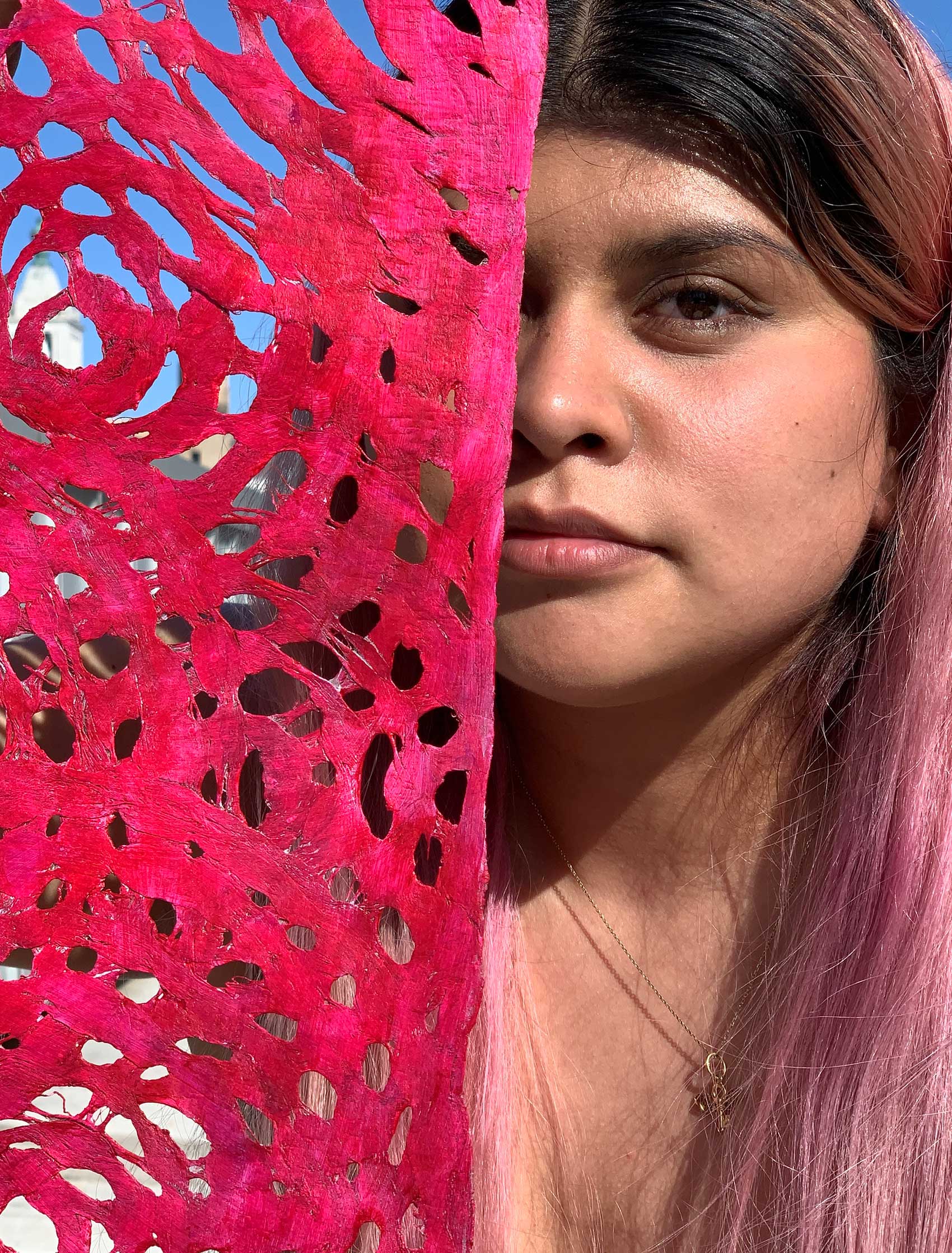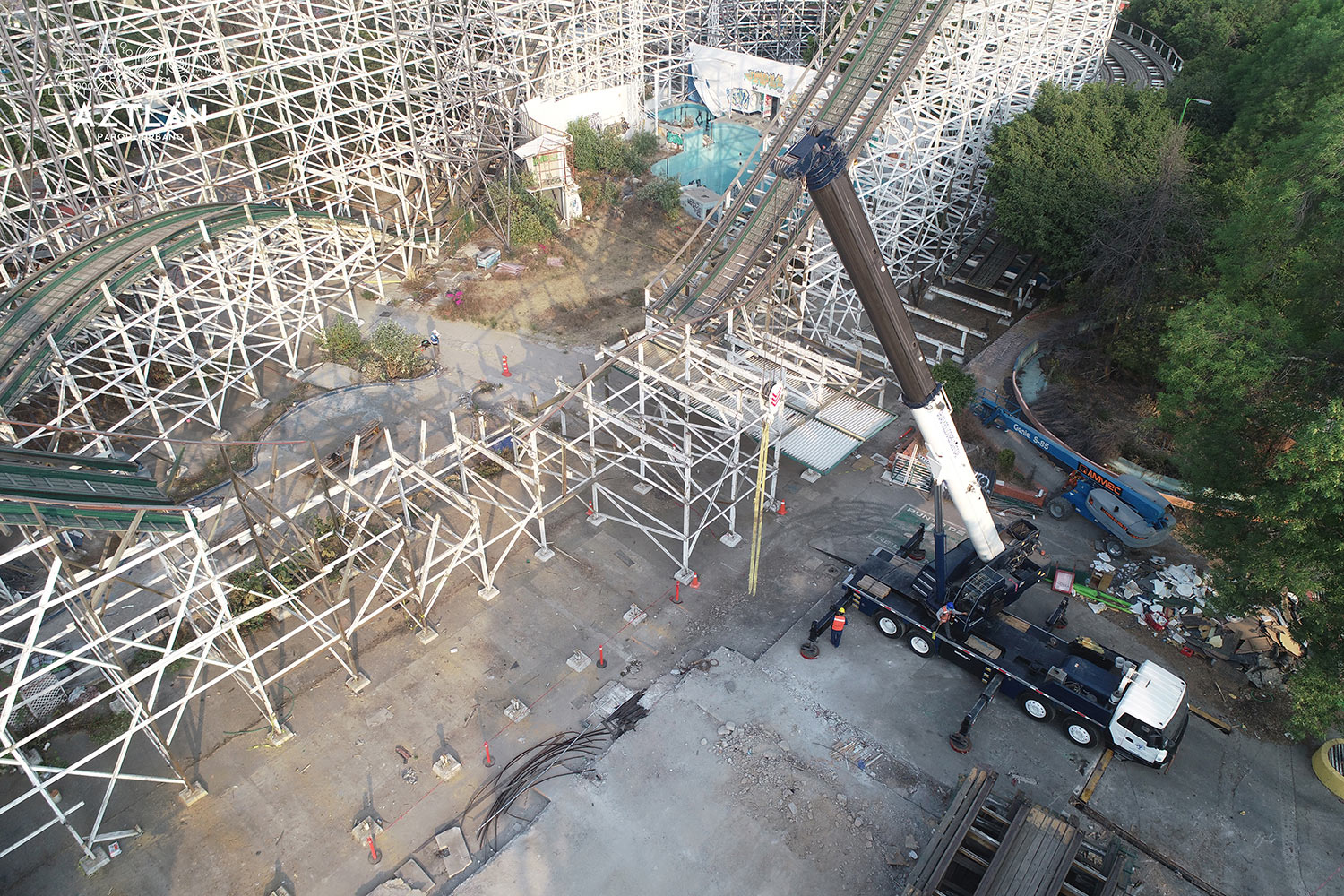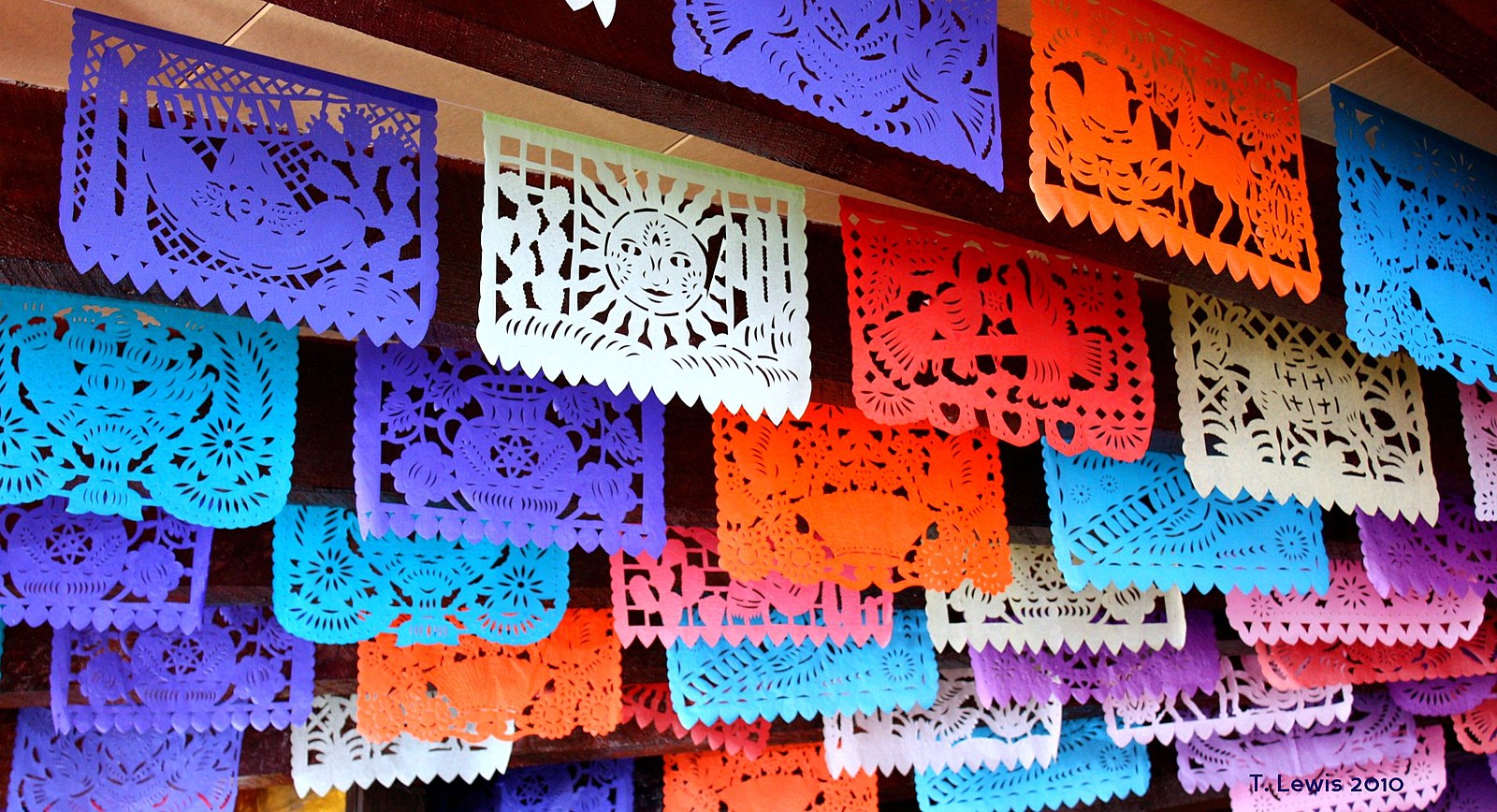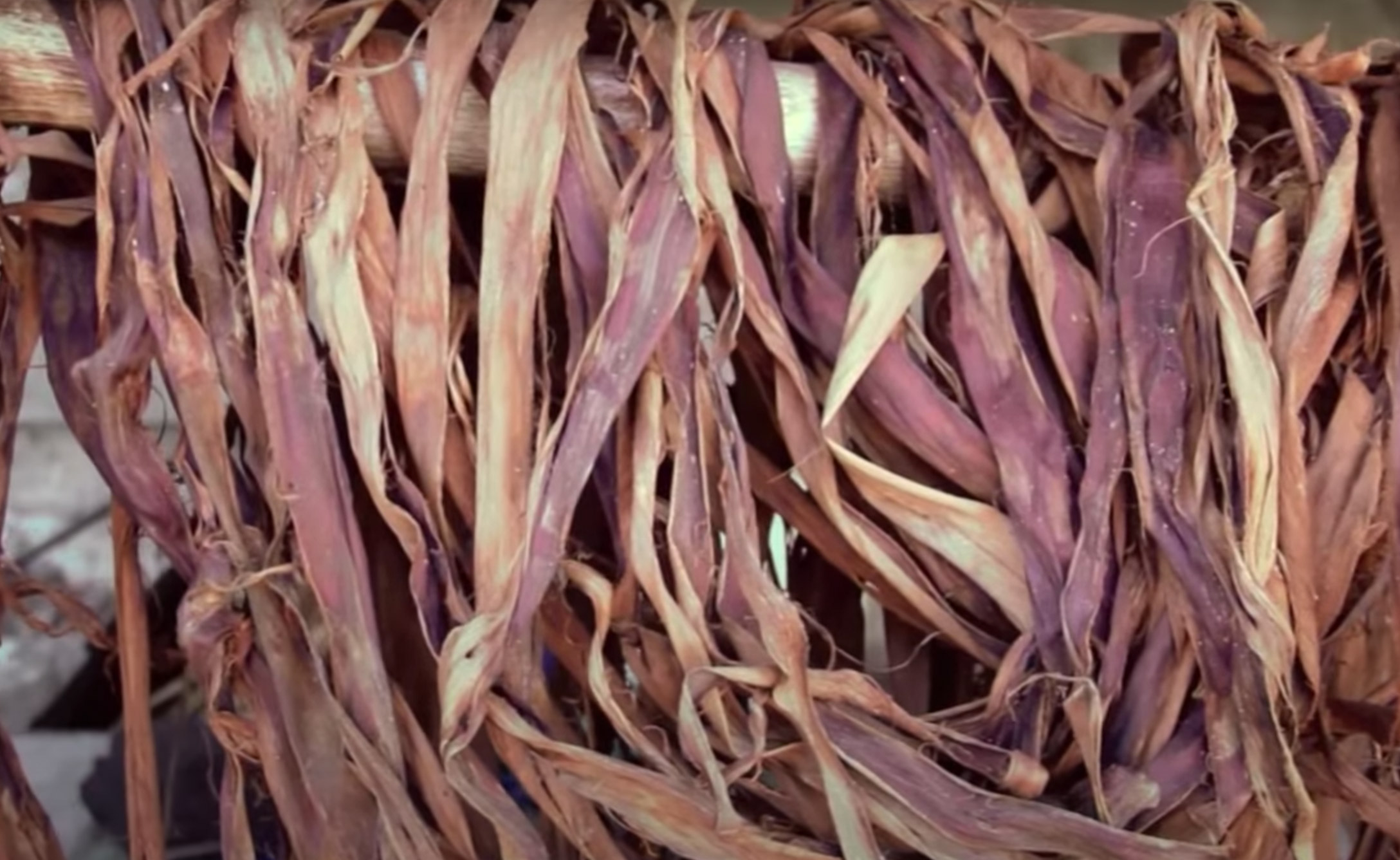Dreams of Fiber/Timber
Sueños con Fiber/Timber Sueños con Fiber/Timber reflects on the past and future of Mexico City. Built from wood recycled from the city’s iconic rollercoaster (La Feria’s Montaña Rusa), the pavilion adapts the pre-Columbian art form known as papel picado (perforated paper) whose openings invite ancestors to pass through to the present.
Dreams of Fiber/Timber is the first structure constructed from the salvaged wood of la Montaña Rusa which was donated by the developer Mota-Engil chosen to reconstruct and renovate the recently closed amusement park, renamed as Parque Aztlan. Built in 1964, La Montaña Rusa captured the imagination of millions visiting La Feria, Mexico’s first amusement park. Like the other large scale urban projects built in Mexico City in the same decade, the rollercoaster captured an era of massive socio-economic transitions and accompanying civic infrastructural development.
A Meso-American art form influenced by China and other cultures, papel picado’s perforations are seen as apertures between past and present. In Mexico, this artform is often associated with the Day of the Dead because the paper was principally created from the fibrous Amate tree (Ficus insipidus) whose prominent, above-ground roots were regarded as a portals to the underworld. These spiritual-vegetal associations, along with the paper’s flexibility and absorptive qualities made amate paper the primary medium used in pre-contact codices. As a key way that the Aztec/Mexica people preserved and shared knowledge, amate paper was regarded as a threat to colonial order. Spanish settlers soon banned the use and production of amate paper, and production facilities were destroyed. The tradition, however, was kept alive in a few locations located outside the city.
Situated at the corner of the historic Alameda Square, the pavilion creates a new urban space of gathering and reflection. Activating the space at night, the pavilion’s lighting design emerged from dialogues with the Otomi artisans who produced the amate paper for this pavilion.
![]() Axon of the Wood and Fiber Pavilion.
Axon of the Wood and Fiber Pavilion.
![]()
The Fair, formerly called The Mechanical Games of Chapultepec, was inaugurated on October 24, 1964. Source
![]()
Karla Mejias and amate paper created by Otomi artisans in Mexico. Photo by Marisa Morán Jahn, 2022
PROCESS
 Axon of the Wood and Fiber Pavilion.
Axon of the Wood and Fiber Pavilion.






